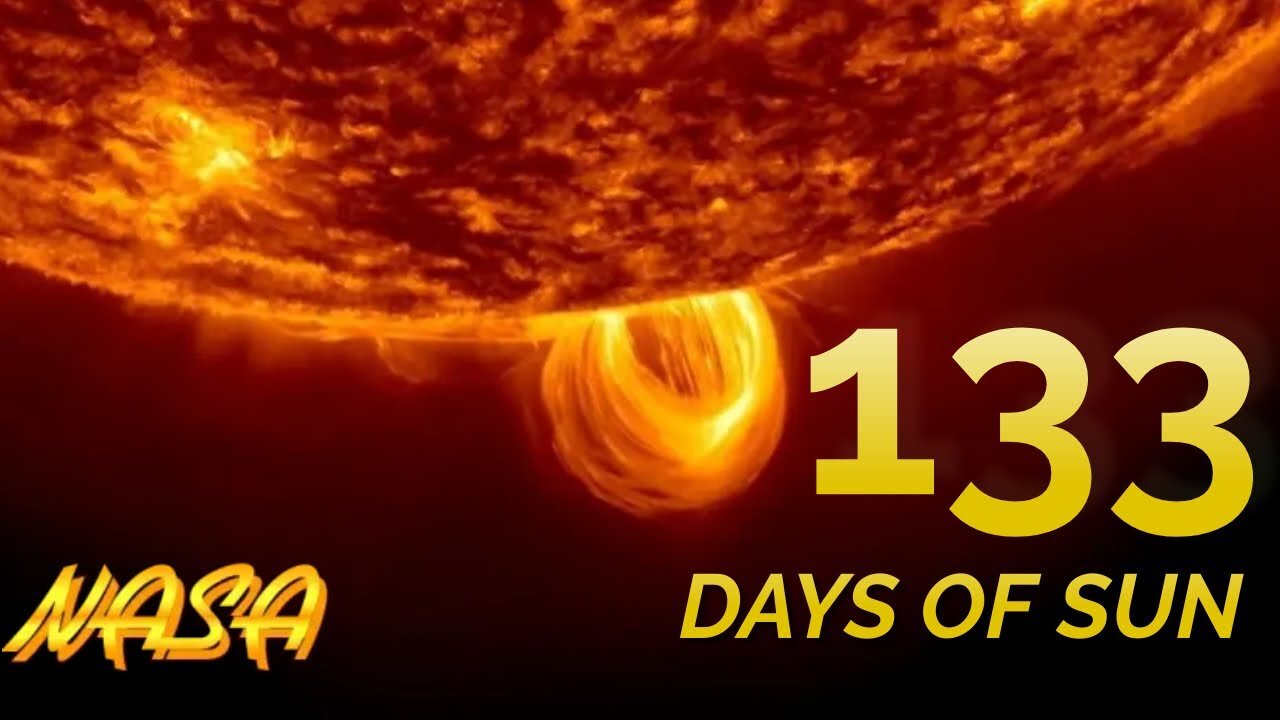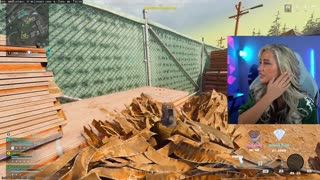Premium Only Content

133 Days On The Sun || NASA
This video chronicles solar activity from Aug. 12 to
Dec. 22, 2022, as captured by NASA's Solar Dynamics
Observatory (SDO). From its orbit in space around
Earth, SDO has steadily imaged the Sun in 4K x 4K
resolution for nearly 13 years. This information has
enabled countless new discoveries about the
workings of our closest star and how it influences
the solar system.
With a triad of instruments, SDO captures an image
of the Sun every 0.75 seconds. The Atmospheric
Imaging Assembly (AIA) instrument alone captures
images every 12 seconds at 10 different wavelengths
of light. This 133-day time lapse showcases photos
taken at a wavelength of 17.1 nanometers, which is
an extreme-ultraviolet wavelength that shows the
Sun's outermost atmospheric layer: the corona.
Compiling images taken 108 seconds apart, the
movie condenses 133 days, or about four months, of
solar observations into 59 minutes. The video shows
bright active regions passing across the face of the
Sun as it rotates. The Sun rotates approximately
once every 27 days. The loops extending above the
bright regions are magnetic fields that have trapped
hot, glowing plasma. These bright regions are also
the source of solar flares, which appear as bright
flashes as magnetic fields snap together in a
process called magnetic reconnection.
While SDO has kept an unblinking eye pointed
toward the Sun, there have been a few moments it
missed. Some of the dark frames in the video are
caused by Earth or the Moon eclipsing SDO as they
pass between the spacecraft and the Sun. Other
blackouts are caused by instrumentation being down or data errors. SDO transmits 1.4 terabytes of
data to the ground every day. The images where the
Sun is off-center were observed when SDO was
calibrating its instruments.
x
SDO and other NASA missions will continue to
watch our Sun in the years to come, providing
further insights about our place in space and
information to keep our astronauts and assets safe.
Credit: NASA's Goddard Space Flight Center
Scott Wiessinger (PAO): Lead Producer
Tom Bridgman (SVS): Lead Visualizer
Scott Wiessinger (PAO): Editor
MAGA
The music is a continuous mix from Lars Leonhard's
"Geometric Shapes" album, courtesy of the artist.
Video Description:
On the left side of the frame is the full circle of the
Sun. It appears in a golden yellow color, but
splotchy and with thin yellow wisps extending from
the surface. Some areas are very bright and others
almost black. The whole Sun rotates steadily, with
one full rotation taking 12 minutes in this time lapse.
There are usually only a few bright regions visible at
a time and they shift and flash like small fires. From
these regions there are wispy loops reaching up
above the surface that rapidly change shape and
size.
On the right side of the frame are two
white-outlined squares with enlargements of
interesting regions of the Sun.
-
 1:59:22
1:59:22
The Michelle Moore Show
1 day ago'Death of A Lot of Things Now, War Empowers BAAL, Plan B Must Be Disarmed, This Will Make or Break President Trump' Guest, Lt. Mark Taylor: The Michelle Moore Show (June 9, 2025)
19K26 -
 2:40:04
2:40:04
sophiesnazz
13 hours agoPLAT RANKEDDDDD !socials
2.1K1 -
 4:24:28
4:24:28
GloryJean
18 hours agoMotivational Monday! Frying on MnK 🖱️ 6.7 K/D
2.32K1 -
 10:18
10:18
Truther Steve
11 hours agoDO Christians REALLY Know Their Enemy's Power?
3.68K1 -
 12:30
12:30
Actual Justice Warrior
11 hours agoLong Island Prankster Is Going To JAIL
5.08K11 -
 13:36
13:36
Nate The Lawyer
2 days ago $0.44 earnedJudge Removed For Illegally Releasing Criminals From Jail
7.3K12 -
 18:13
18:13
Scammer Payback
3 days agoScammers saying Insane things
7.98K11 -
 1:44
1:44
New York Post Sports
2 days agoCoco Gauff Wins First French Open Title
8.06K -
 8:53
8:53
The Dana Show with Dana Loesch
2 days agoCritics Are LOSING IT Over Marvel's Possible Decision
11.6K10 -
 23:07
23:07
Clownfish TV
2 days agoGen Z Retcons the 1980s...
12.4K31